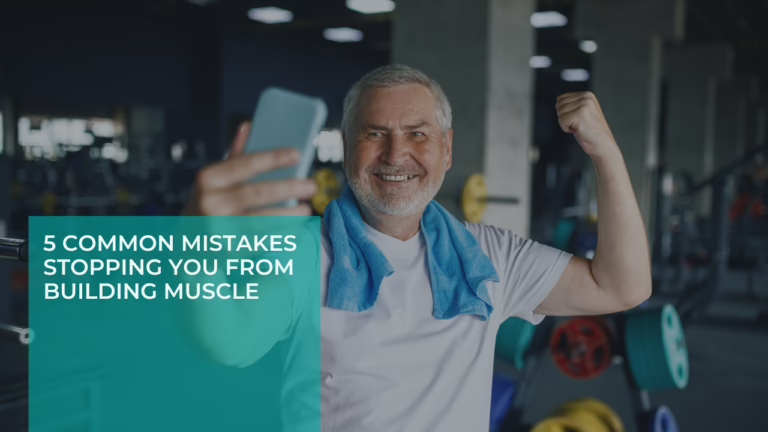The Shocking Truth About Aerobic Exercise And Your Heart Health!
Today, we’re tackling a subject that’s not just a matter of fitness—it’s a matter of life and death. We’re talking about cardiovascular health, and I’ve got some eye-opening facts that you need to hear.
You might be wondering, “Why should I care?” Consider this: In the UK alone, 1 in 3 adults has high blood pressure, and over 4 million people are grappling with diabetes. These aren’t just statistics; they reflect a health crisis we can no longer ignore. But here’s the good news: You can take control of your health, and it starts with understanding the science-backed benefits of aerobic exercise.
So, let’s cut through the noise and get straight to the facts that could save your life.
The Heart Health Crisis
If you’re under the impression that cardiovascular issues are rare or something that “won’t happen to me,” it’s time to reconsider. Cardiovascular diseases are the leading cause of death globally. High blood pressure alone affects many adults and is not just a problem for older people. I’ve had clients in their 30s and 40s who were shocked to find out they had high blood pressure during a routine check-up.
Common Misconceptions
Let’s clear the air and debunk some myths. One of the biggest misconceptions is that you’re in the clear if you’re not experiencing any symptoms. That’s far from the truth. High blood pressure is often called the “silent killer” because it can be asymptomatic until it’s too late.
The Cost of Ignorance
Ignoring the signs or living in denial? The cost can be your life. I’ve seen clients who took action just in time to significantly reverse their high blood pressure and improve their quality of life. Conversely, I’ve also seen individuals who waited too long and faced severe consequences. One of the most heartbreaking examples was one of my first bosses, who sadly passed away at a relatively young age. The tragedy is that his death could have been prevented with timely intervention and lifestyle changes. The sooner you take action, the better your chances of improving your health and quality of life.
What is Aerobic Exercise?
Definition and Types
When we talk about aerobic exercise, we’re referring to any physical activity that elevates your heart rate and breathing while engaging large muscle groups. This isn’t just limited to running or cycling; it can also include activities like swimming, dancing, and even brisk walking. The key is finding an activity you enjoy so you’re more likely to stick with it.
The Science Behind Aerobic Exercise
Now, let’s get down to the science of it all. When you engage in aerobic exercise, your heart rate increases, pumping more oxygen-rich blood. This has a cascade of benefits, not least making your heart more efficient at its job. An efficient heart can pump the same amount of blood but with fewer beats per minute. This reduces the strain on your heart, lowering your risk of cardiovascular issues like high blood pressure.
Aerobic Exercise and High Blood Pressure
The Connection
If you’re wrestling with high blood pressure, aerobic exercise might be the ally you’ve been searching for. Regular aerobic activities can help lower the pressure in your arteries, making your heart’s job easier. Aerobic exercise helps your heart pump blood more efficiently, reducing the strain on your arterial walls.
Case Studies
But don’t just take my word for it; the evidence is compelling. Numerous studies have shown that individuals who engage in regular aerobic exercise can experience significant reductions in their blood pressure levels. One study even found that moderate aerobic exercise could be as effective as some medications in reducing high blood pressure! Now, I’m not saying you should ditch your meds. Still, when starting an aerobic exercise regimen, you should discuss it with your GP first.
Aerobic Exercise and Weight Management
Caloric Burn
One of the standout benefits of aerobic exercise is its ability to burn calories rapidly. But let’s dig a little deeper into the science of it. Aerobic exercise relies on oxygen to fuel your muscles. When you’re engaged in a sustained activity like running or swimming, your body taps into stored fat for energy, converting it into usable fuel. This process is known as lipolysis, and it’s facilitated by the oxygen you take in while exercising. So, you are burning calories and directly targeting fat stores, which is a double win for weight loss and heart health.
The Domino Effect
Here’s where it gets even more interesting: Weight loss has a domino effect on your overall health. Shedding those extra pounds can lower blood pressure, improve cholesterol levels, and reduce blood sugar. In essence, losing weight through aerobic exercise can create a chain reaction of health benefits, making your heart’s job easier and reducing your risk of cardiovascular disease.
Aerobic Exercise and Diabetes
Blood Sugar Control
Managing diabetes often feels like a tightrope walk with your blood sugar levels. Aerobic exercise can serve as a safety net in this balancing act. When you engage in aerobic activities, your muscles use glucose for energy, lowering blood sugar levels. This is a natural way to keep your blood sugar in check and reduce your dependency on medication.
Insulin Sensitivity
But the benefits continue beyond there. Regular aerobic exercise can also improve your body’s sensitivity to insulin. What does this mean? Simply put, your body will require less insulin to regulate blood sugar levels, making it easier to manage your diabetes. This is crucial because improved insulin sensitivity can improve blood pressure and cholesterol levels, contributing to cardiovascular health.
Getting Started with Aerobic Exercise
Consult a GP
Before you lace up those trainers and hit the track, it’s crucial to consult your GP, especially if you have existing health conditions like high blood pressure or diabetes. Your GP can provide tailored advice and may even recommend specific types of aerobic exercise most suitable for you.
Beginner’s Guide
Starting an exercise regimen can feel daunting, but remember, Rome wasn’t built in a day. Begin with something manageable, like a 20-minute brisk walk, and gradually work your way up. The key is consistency. As health authorities recommend, aim for at least 150 minutes of moderate aerobic exercise per week.
Progress Tracking
One of the most motivating aspects of incorporating aerobic exercise into your routine is seeing the tangible results. Tracking your progress can be incredibly motivating, whether it’s a drop in blood pressure, weight loss, or improved stamina. Consider using a fitness app or even old-fashioned pen and paper to keep tabs on your achievements.
Take the Leap: Your Heart Will Thank You
Before we wrap up, I want to share a personal experience that underscores the importance of everything we’ve discussed. In 2021, I faced a significant health setback—severe myocarditis as a side effect of the COVID-19 vaccine. It was a frightening time, forcing me to reevaluate and rebuild my aerobic base from scratch.
This is where Zone 2 training comes into play. For context, exercise intensity is often categorised into different heart rate zones:
Zone 1: Very light (50–60% of HRmax)
Zone 2: Light (60–70% of HRmax)
Zone 3: Moderate (70–80% of HRmax)
Zone 4: Hard (80–90% of HRmax)
Zone 5: Maximum (90–100% of HRmax)
I focused on Zone 2, which involves maintaining your heart rate at 60-70% of your maximum. This moderate intensity level allows you to exercise for extended periods without overtaxing your system. And here’s a crucial point: exercise isn’t always about “pushing it to the max” in every session. In fact, consistently operating in Zone 2 can offer sustainable, long-term health benefits without the risk of burnout or injury.
Why is this zone so crucial? It’s the sweet spot where your body maximises fat oxidation, meaning you’re burning fat most efficiently. The relevance of Zone 2 goes beyond just fat burning. It also helps improve your body’s ability to use fat as fuel, increases capillary density, and enhances mitochondrial efficiency—all of which contribute to better cardiovascular health.
Since incorporating Zone 2 training into my routine, I’ve seen remarkable improvements in my heart health and overall well-being. So, whether you’re an athlete, someone recovering from a health setback, or just looking to improve your cardiovascular health, Zone 2 training can be a game-changer. It’s not just about pushing your limits; it’s about understanding them through your heart rate and working within them to achieve sustainable, long-term health benefits.
In a nutshell, aerobic exercise isn’t just a good idea; it’s a life-saving one. From lowering high blood pressure to managing diabetes and aiding in weight loss, the benefits are far-reaching. But remember, the first step is often the hardest. Hence, it’s crucial to consult your GP before embarking on this journey towards better health. So why wait? Take that first step today and set yourself on a healthier, happier you.
References
The Heart Health Crisis
World Health Organization. (2017). Cardiovascular diseases (CVDs).
The Prevalence of Cardiovascular Issues
British Heart Foundation. (2019). High Blood Pressure.
Diabetes UK. (2020). Facts & Figures.
Common Misconceptions
American Heart Association. (2018). Understanding Blood Pressure Readings.
The Cost of Ignorance
Centers for Disease Control and Prevention. (2019). High Blood Pressure.
The Science Behind Aerobic Exercise
Aerobic Exercise and High Blood Pressure
Aerobic Exercise and Weight Management
Aerobic Exercise and Diabetes
Getting Started with Aerobic Exercise
NHS. (2019). Physical activity guidelines for adults.
Zone 2 Training
Disclaimer: This blog post is intended for informational purposes only and does not constitute medical advice. While I am a certified Nutritionist, and Personal Trainer, I am not a healthcare professional. The information provided in this post is based on my personal experiences, professional expertise, and available research. It should not be used as a substitute for professional medical advice, diagnosis, or treatment. Always seek the advice of your healthcare provider with any questions you may have regarding a medical condition or treatment before undertaking a new healthcare regimen. Never disregard professional medical advice or delay seeking it because of something you have read on this blog.


